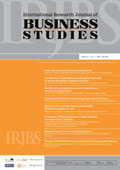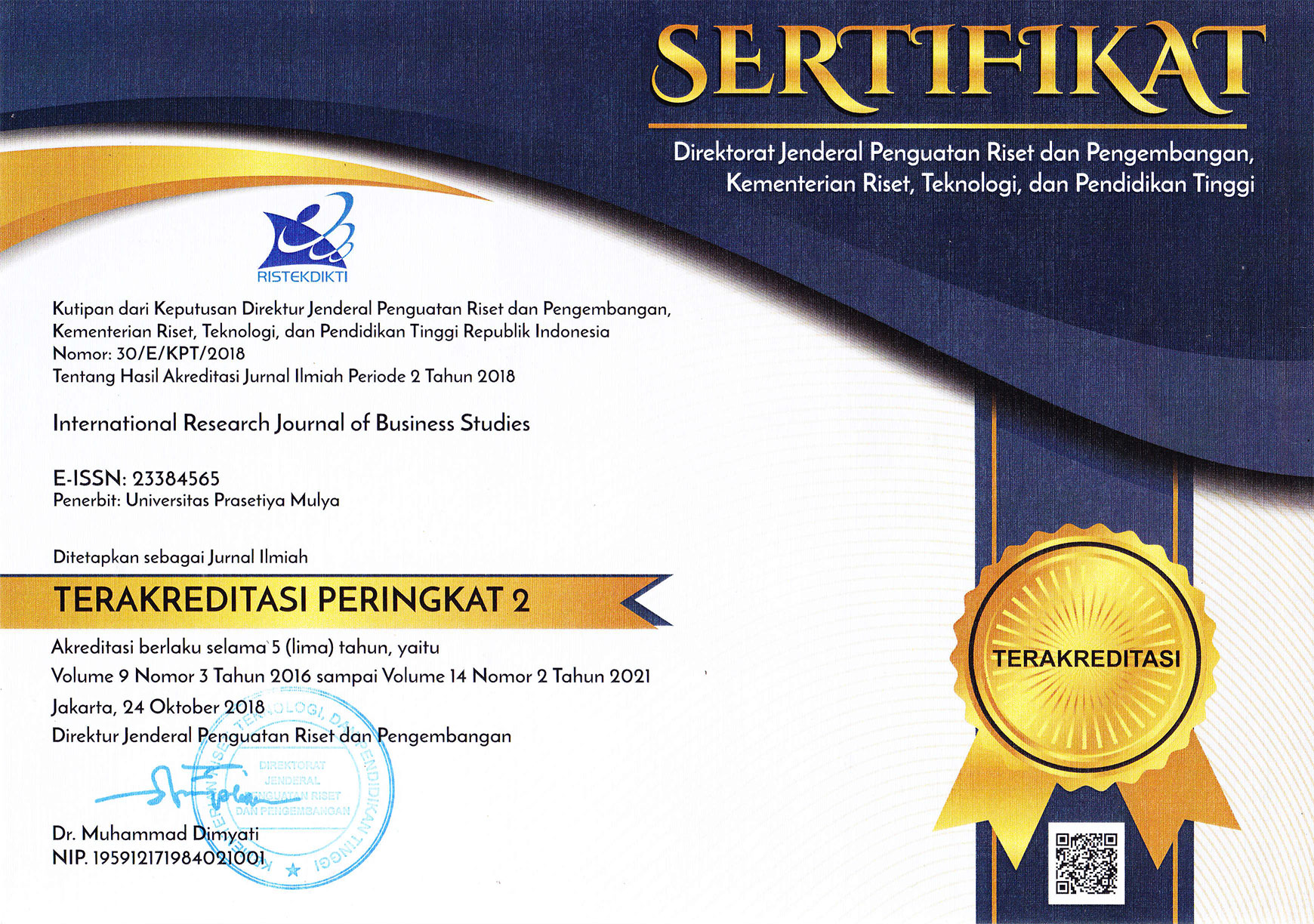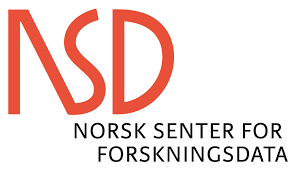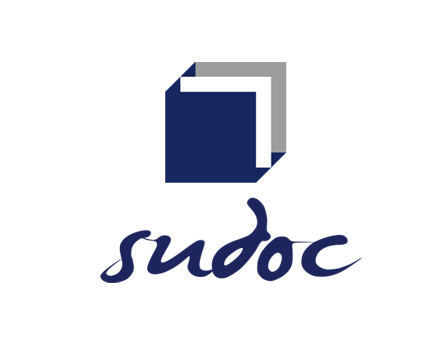Article Metrics |
|
|
Factors Affecting Employee Performance during Work from Home
Abstract
The Corona Virus Disease (Covid-19) pandemic in Indonesia began with the discovery of Covid-19 sufferers on March 2, 2020. Coronavirus is a group of viruses that can cause disease in animals or humans. To respond the conditions of the Covid-19 outbreak, NPPA issued a regulation concerning adjustments to the work system of the government employee in efforts to prevent the spread of Covid-19. This study uses census sampling, where all members of the population used as samples. The total responden of the Government Employee in NPPA is 128 employees, who are works mostly at home during the pandemic. The research data used primary and secondary data. Comparison using PLS-SEM as analyzing the data. The result of the research showed that leadership and work environment have impact on employee performance, whereas organizational support has no impact on employee performance.
Keywords: Leadership Work Environment Organizational Support Employee Performance Work from Home.
* Department of Management, Faculty of Management, Institut Pertanian Bogor
Full Text:
References
Aboelmaged, M. G., Mohamed, S., & Subbaugh, E. (2012). Factors influencing perceived productivity of Egyptian teleworkers :
an empirical study. Measuring Business Excellence, 16(2), 3–22. https://doi.org/10.1108/13683041211230285
Agarwal, S. (2020). Leadership Style and Performance of Employees. International Research Journal of Business Studies,
(1), 1–14. https://doi.org/10.21632/irjbs.13.1.1-14
Baker, E., Avery, G. C., & Crawford, J. (2006). Home alone: The role of technology in telecommuting. Information Resources
Management Journal, 19(4), 1–22. https://doi.org/10.4018/irmj.2006100101
Belzunegui-Eraso, A., & Erro-Garcés, A. (2020). Teleworking in the context of the Covid-19 crisis. Sustainability (Switzerland),
(9), 1–18. https://doi.org/10.3390/su12093662
Brunelle, E. (2013). Leadership and mobile working: The impact of distance on the superior-subordinate relationship and the
moderating effects of leadership style. International Journal of Business and Social Science, 4(11), 1–14.
Burbach, M. E., & Day, F. C. (2012). Does Organization Sector Matter in Leading Teleworker Teams ? A Comparative Case Study.
International Journal of Business Research and Development, 3(1), 8–21.
Cascio, W. F. (2000). Managing a virtual workplace.: Discovery Service der Bibliotheken der RUB. 14(3). Retrieved from
http://eds.a.ebscohost.com/eds/pdfviewer/pdfviewer?vid=2&sid=d5152e6d-030b-449a-aff1-1f43ccad96f3%40sdc-vsessmgr01
Chu, D. K., Akl, E. A., Duda, S., Solo, K., Yaacoub, S., Schünemann, H. J., … Reinap, M. (2020). Physical distancing, face masks,
and eye protection to prevent person-to-person transmission of SARS-CoV-2 and COVID-19: a systematic review and
meta-analysis. The Lancet, 395(10242), 1973–1987. https://doi.org/10.1016/S0140-6736(20)31142-9
Coenen, M., & Kok, R. A. W. (2014). Workplace flexibility and new product development performance: The role of telework
and flexible work schedules. European Management Journal, 32(4), 564–576. https://doi.org/10.1016/j.emj.2013.12.003
Di Martino, V., & Wirth, L. (1990). Telework: A new way of working and living. Int’l Lab. Rev., 129, 529.
Greer, T. W., & Payne, S. C. (2014). Overcoming Telework Challenges : Outcomes of Successful Telework Strategies. 17(2),
–111. https://doi.org/10.1037/mgr0000014
Hair, J. F., Sarstedt, M., Hopkins, L., & Kuppelwieser, V. G. (2014). Partial least squares structural equation modeling (PLS-SEM):
An emerging tool in business research. European Business Review, 26(2), 106–121. https://doi.org/10.1108/EBR-10-2013-
Kim, H. (2014). Transformational leadership, organizational clan culture, organizational affective commitment, and
organizational citizenship behavior: A case of South Korea’s public sector. Public Organization Review, 14(3), 397–417.
Kowalski, K. B., & Swanson, J. A. (2005). Critical success factors in developing teleworking programs. Benchmarking, 12(3),
–249. https://doi.org/10.1108/14635770510600357
Kurland, N. B., & Bailey, D. E. (1999). Telework: The advantages and challenges of working here, there, anywhere, and anytime.
IEEE Engineering Management Review, 28(2), 49–60.
Martin, B. H., & MacDonnell, R. (2012). Is telework effective for organizations?: A meta-analysis of empirical research on
perceptions of telework and organizational outcomes. Management Research Review, 35(7), 602–616. https://doi.
org/10.1108/01409171211238820
Martínez-Sánchez, A., Pérez-Pérez, M., José Vela-Jiménez, M., & de-Luis-Carnicer, P. (2008). Telework adoption, change
management, and firm performance. Journal of Organizational Change Management, 21(1), 7–31. https://doi.
org/10.1108/09534810810847011
Mustafa, M., & Gold, M. (2013). “Chained to my work”? Strategies to manage temporal and physical boundaries among selfemployed teleworkers. Human Resource Management Journal, 23(4), 413–429. https://doi.org/10.1111/1748-8583.12009
Nakrošienė, A., Bučiūnienė, I., & Goštautaitė, B. (2019). Working from home: characteristics and outcomes of telework.
International Journal of Manpower, 40(1), 87–101. https://doi.org/10.1108/IJM-07-2017-0172
Ng, C. F. (2016). Public spaces as workplace for mobile knowledge workers. Journal of Corporate Real Estate, Vol. 18 No,
–223. https://doi.org/DOI 10.1108/JCRE-10-2015-0030
Ng, C. F., & Ng, C. F. (2010). Teleworker ’ s home office : an extension of corporate office ? Emerald Group Publishing Limited,
(3), 137–155. https://doi.org/10.1108/02632771011023113
Nilles, J. M. (1988). Traffic Reduction by Telecommuting: a Status Review and Selected Bibliography. Pergamon Press Plc,
A(4), 301–317.
Pieterse, A. N., Van Knippenberg, D., Schippers, M., & Stam, D. (2009). Transformational and transactional leadership and
innovative behavior: The moderating role of psychological empowerment. Journal of Organizational Behavior, 31(4),
–623. https://doi.org/DOI: 10.1002/job.650
Robbins, S. P., & Judge A, T. (2017). Organizational Behavior (17thEditon ed.). London, England: Pearson Education Limited.
Valmohammadi, C. (2012). Investigating the perceptions of Iranian employees on teleworking. Industrial and Commercial
Training, 44(4), 236–241. https://doi.org/DOI 10.1108/00197851211231513
Vega, R. P., Anderson, A. J., & Kaplan, S. A. (2015). A Within-Person Examination of the Effects of Telework. Journal of Business
and Psychology, 30(2), 313–323. https://doi.org/10.1007/s10869-014-9359-4
World Health Organization. (2020). Preparing for large-scale community transmission of COVID-19. World Health Organization,
(February), 1–8. Retrieved from https://apps.who.int/iris/bitstream/handle/10665/331243/COVID-19-02282020.pdf
Copyright (c) 2020 INTERNATIONAL RESEARCH JOURNAL OF BUSINESS STUDIES
International Research Journal of Business Studies has been covered by the following services: | ||||||||||||||||||||||||
|




















